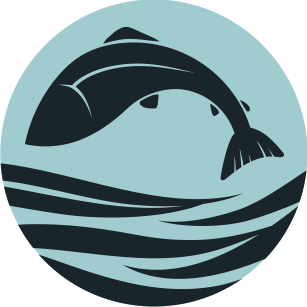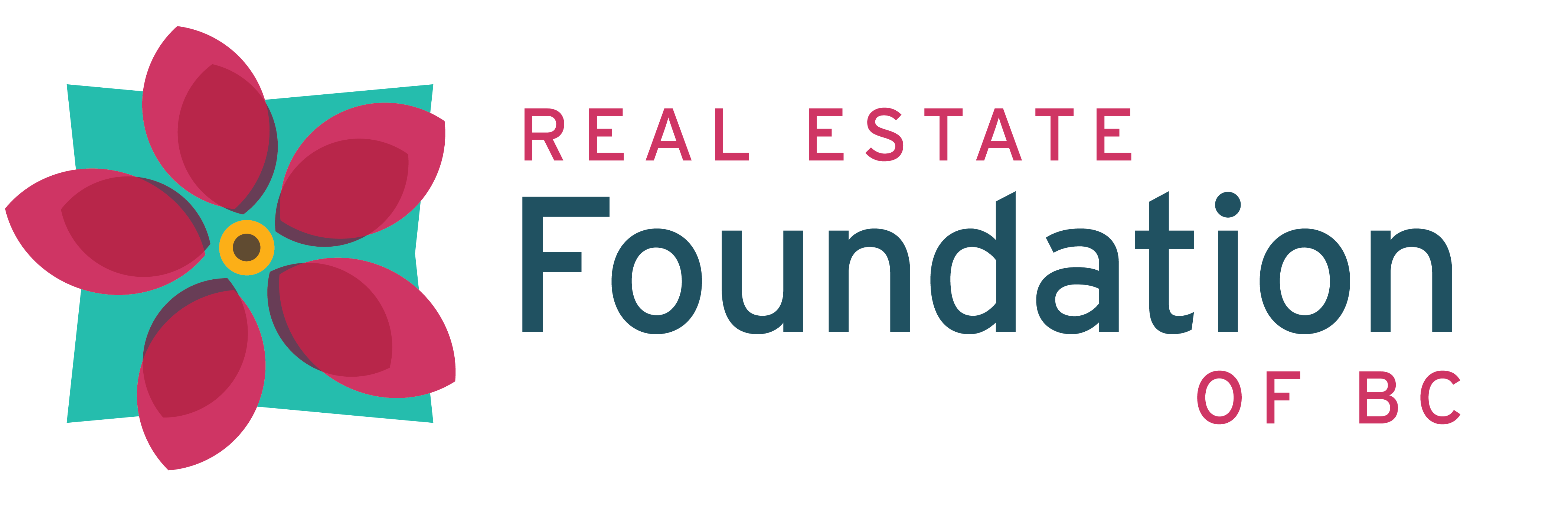In the Field with the LEPS Wetlands Crew
Shovels, hip waders, and sunscreen. Those are some of the tools of the trade for Laura Stepney, Elyse Dyck, and Geoffrey Niven, co-coordinators of the Langley Environmental Partners Society’s (LEPS) Wetlands Crew, which works to restore and protect wetland ecosystems.
LEPS’s Wetland Crew is part of the BCWF Wetlands Workforce, funded through the Healthy Watersheds Initiative, which is employing more than 100 people in wetlands restoration projects across the province.
“We make the natural system that’s already there work better,” explains Laura Stepney.
Wetlands – marshes, bogs, and ponds – are important natural environments that help store and filter water, stabilize shorelines by controlling erosion, and provide habitat for insects, amphibians, fish, birds, and other animals. These spongy environments also help to sequester carbon and act as buffers between land and water.
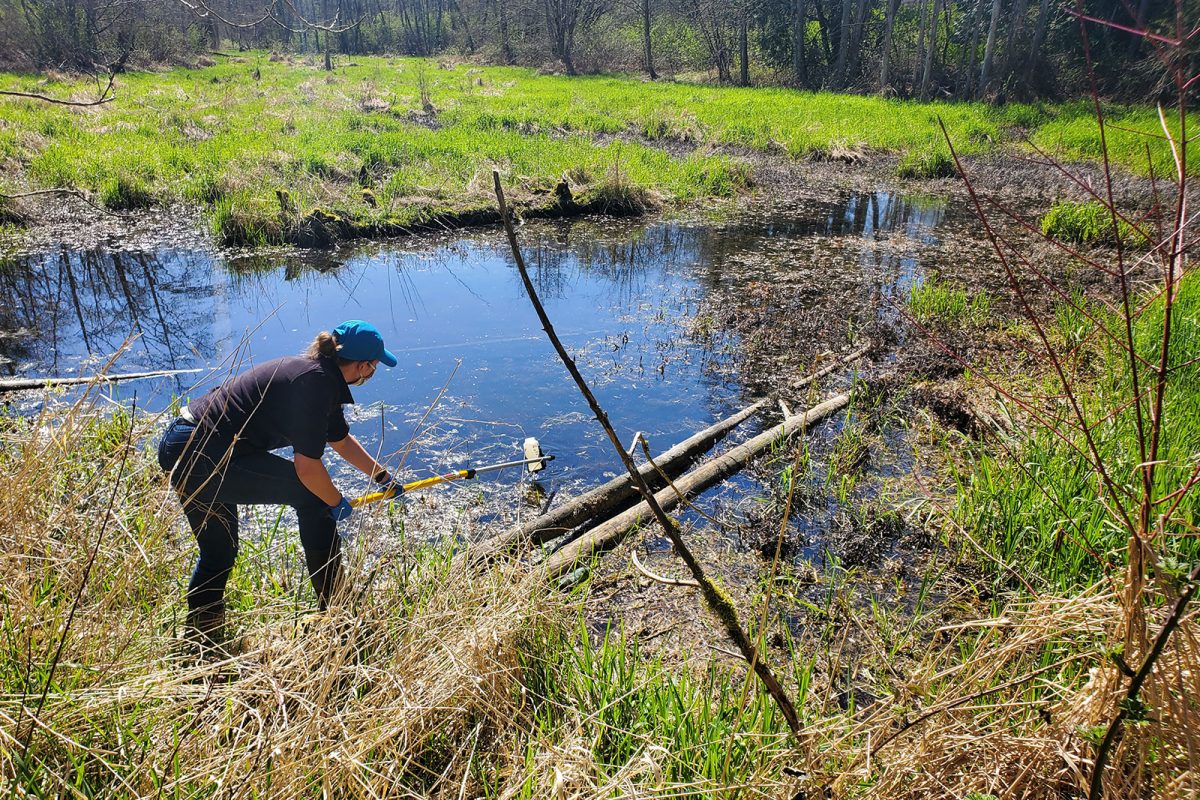
To learn more about the health of a wetland, the LEPS Wetland Crew collects water samples to test for environmental DNA (“eDNA”) to check the number and type of species (bugs) present in the water.
(Photo: Langley Environmental Partners Society)
On the job, the Wetlands Crew works mainly outdoors: removing invasive species, re-introducing native plants, and monitoring the long-term health of wetlands on public and private land in the Township of Langley and the City of Langley.
“We get here bright and early,” says Elyse Dyck.
Laura, Elyse, and Geoffrey start their days at the LEPS office in the Murrayville neighbourhood, where they handle administrative tasks like answering emails, scheduling site visits, planning projects, and conducting training.
Once the admin work is out of the way, the team collects their equipment (pruners, clippers, shovels, gear) and travels to the day’s work site. Because different invasive species need to be removed at different times in the season, no two days are exactly alike.
At this time of the year, the team is working to remove yellow flag iris, a flowering plant that invades streams, lakes, and shallow ponds. While the flowers look pretty, the yellow flag iris’s roots form dense underwater mats that block water flow, damage habitats, and crowd out native plants.
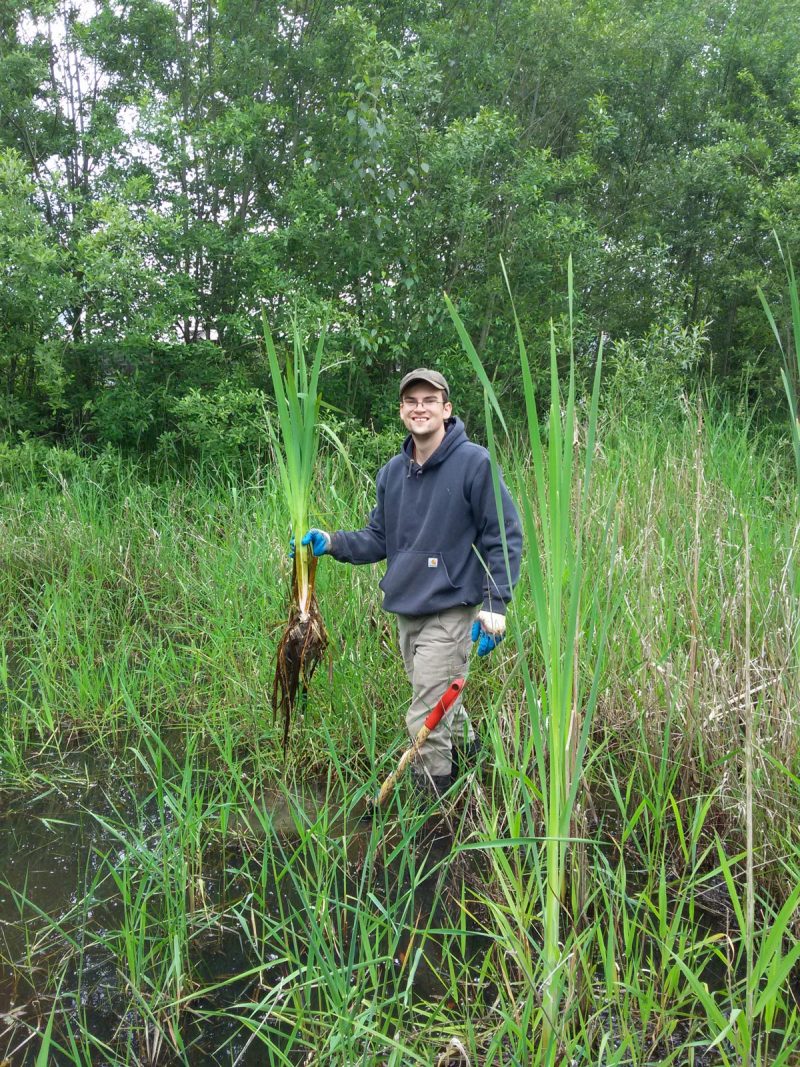
Geoffrey Niven, member of the LEPS Wetland Crew, works to remove yellow flag iris from public lands. Yellow flag iris can damage wetland habitats – blocking water flow and crowding out native species. (Photo: Langley Environmental Partners Society)
“It’s one of the messier days,” says Elyse. “You’re literally in the wetland, up to your knees almost in water, and you’re digging out these big, grass-like plants with yellow flowers on them.”
Through the summer months, they’ll work to remove other invasive species like knotweed, scotch broom, blackberry, morning glory, and purple loosestrife.
“Some invasives require multiple visits,” says Geoffrey Niven. “There’s a wide variety of invasives that flower and seed at different times, which can vary based on temperature and precipitation. Himalayan balsam will be coming up soon and, right now, we’re not touching blackberry due to bird nesting season.”
The team uses Excel to track invasive plants and plan their removal. They also work with volunteers to re-introduce native species like the pacific willow tree, which can regrow by cutting “stakes” from tree limbs and planting them in water. Through willow staking, limbs taken from one tree can grow into hundreds of new trees, which can help to control erosion and stabilize a wetland.
As part of the job, Wetland Crew co-coordinators return to sites to check on the health of ecosystems.
“We return to sites as many times as we can throughout our term,” says Geoffrey. When monitoring, they look for birds and amphibians, counting species they see present and looking for nests and eggs.
“They BC Wildlife Federation is more interested in whether we’ve seen an egg mass, for example, than if we just saw a frog,” says Laura. “If you see tadpoles or eggs, that’s evidence of reproduction happening and of species using an environment.”
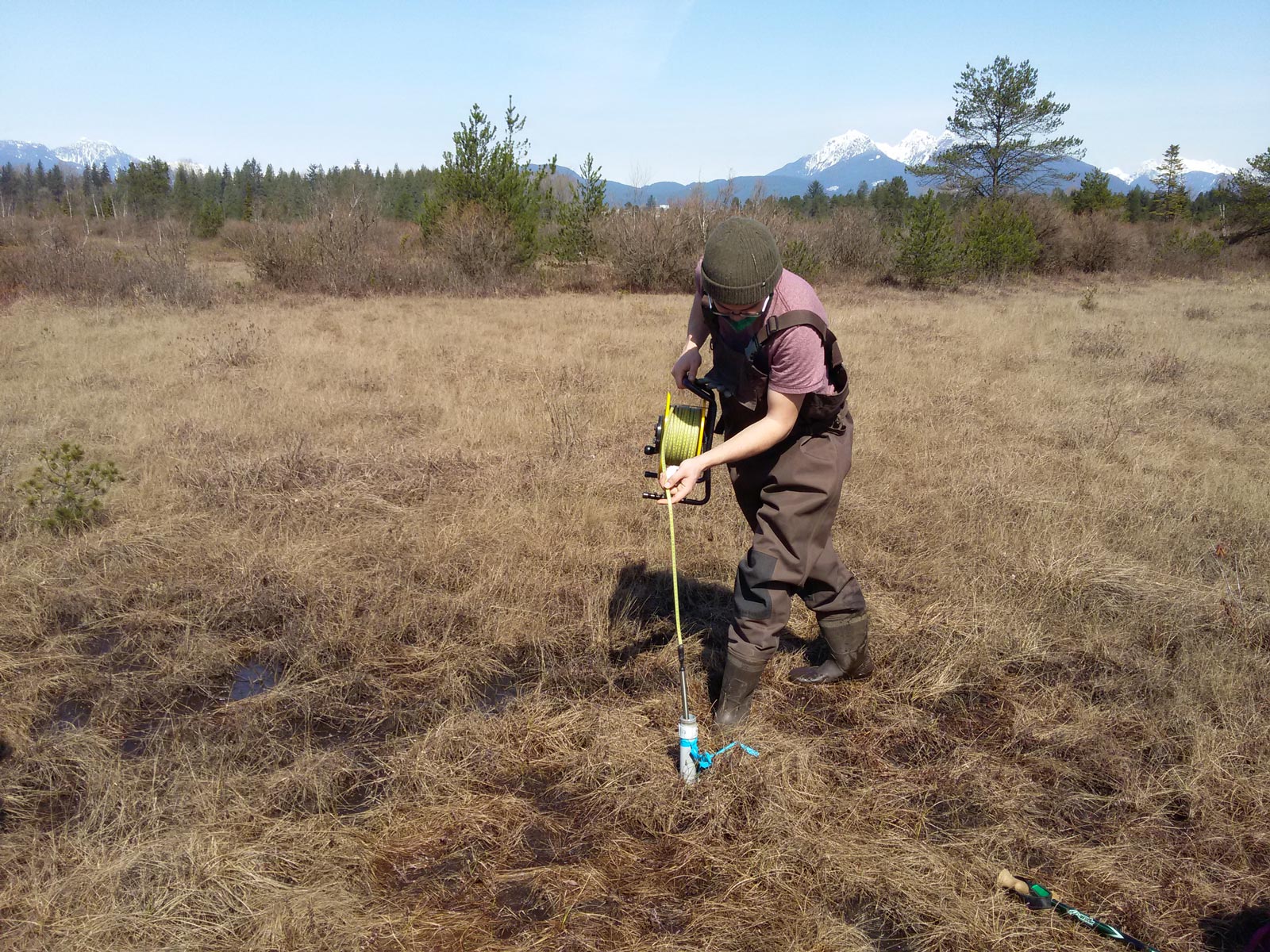
As part of its monitoring program, the LEPS Wetland Crew installs and checks water level meters in Metro Vancouver parks. (Photo: Langley Environmental Partners Society)
Laura, Elyse, and Geoffrey say the job is rewarding and enjoy working alongside colleagues and community members who care about the environment.
“When you come home at the end of the day, you feel like you were doing work that’s good for the world, and that you’ve accomplished something physical and tangible that others can see,” says Laura.
WETLANDS CREW - INVASIVE SPECIES SCHEDULE
Times below are estimates – flowering and seeding times can change, depending on temperature, rainfall, and climatic factors.
| Species | Removal Time | Notes |
|---|---|---|
| Lamium | Early Spring | Before seed set |
| Blackberry | Before late May | Anytime but preferably before bloom |
| Scotch Broom | April to June | While flowering, before seed set |
| Chervil | April to June | |
| Morning Glory | Before June | Before flowering |
| Knotweed | Early spring to midsummer | |
| Yellow Flag Iris | Late May/June to July | While flowering |
| Himalyan Balsam | Spring and Summer | Before seed set |
| Canary Reed Grass | Midseason | |
| Purple Loosestrife | Between June and August | Easy to recognize in flower, not yet gone to seed |
| Ivy | Anytime | |
| Holly | Anytime | |
| Thistle | Anytime | |
| Balsam | May or June | |
| Hawthorn | May |
